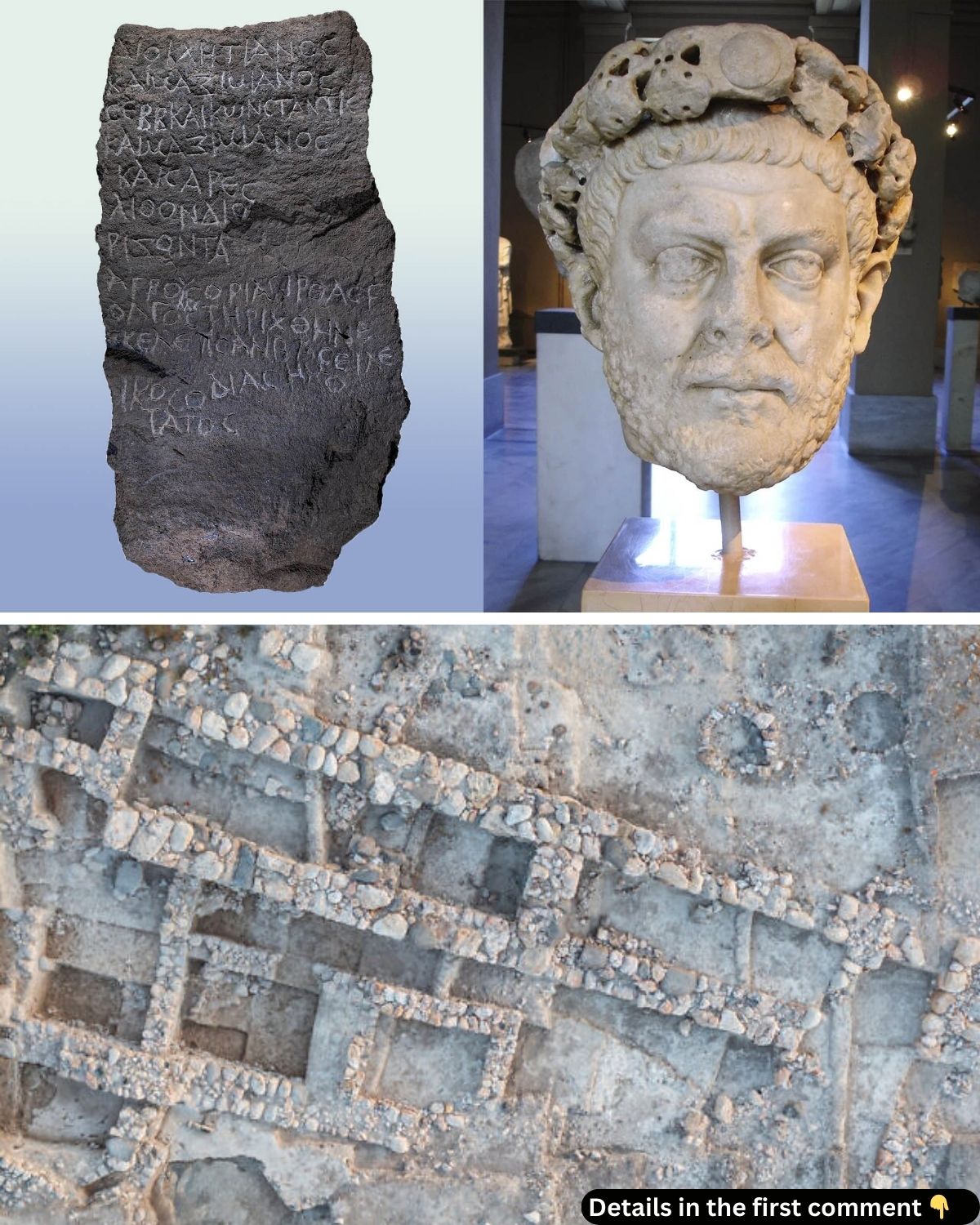In the Upper Galilee of Israel, a remarkable discovery has brought a new understanding of the Roman Empire’s influence in the 3rd century CE. A boundary stone, unearthed at Abel Beth Maacah, offers rare insight into Emperor Diocletian’s reign and his fiscal reforms. This artifact not only sheds light on administrative practices but also reveals hidden villages and hints at the tensions between the Roman authorities and the local population. The find connects archaeology with historical texts, offering an intriguing glimpse into a pivotal moment in the Roman Empire’s history.
The Artifact: A Glimpse into Roman Administrative Systems
The artifact in question is a meter-long basalt stone, inscribed with a Greek text that offers a rare glimpse into the Roman Empire’s territorial management. These boundary stones were integral to the Roman administration, marking the edges of landholdings and facilitating the Empire’s control over its vast territories. At the time of its discovery, archaeologists were immediately intrigued by its significance in the context of Diocletian’s sweeping fiscal reforms. The stone marked boundaries between lands, something that was crucial for the Roman government’s tax collection system and its attempts to control vast regions with a divided administration.

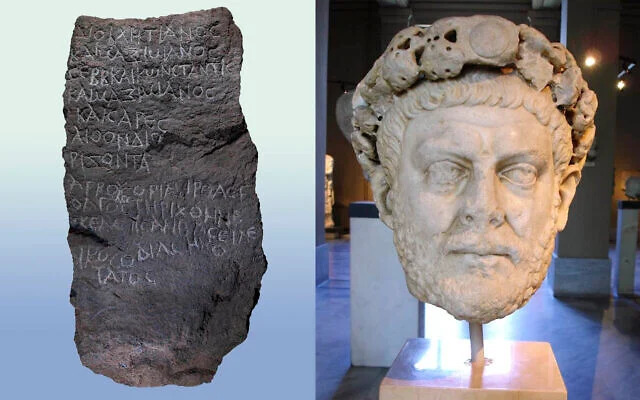
The Tetrarchy, established by Diocletian, divided the Empire into four regions, each governed by one senior emperor and one junior emperor. These reforms required meticulous record-keeping and the erection of boundary markers to maintain control over the population and resources. This stone serves as a physical testament to how Roman officials monitored the land and its resources during this period of reorganization.
Video
Watch this quick 5-minute video to get an overview of the fascinating history of Ancient Israel and Judah.
The Historical Context: Diocletian’s Reign and the Tetrarchy

Diocletian’s rule, spanning from 284 to 305 CE, was marked by significant changes in Roman governance. Faced with an empire too large to be effectively ruled by a single emperor, Diocletian instituted the Tetrarchy in 293 CE, splitting the empire into four administrative regions. This system was intended to make governance more efficient by sharing the responsibilities of leadership, with two senior emperors (Augusti) and two junior emperors (Caesares) overseeing different parts of the empire.
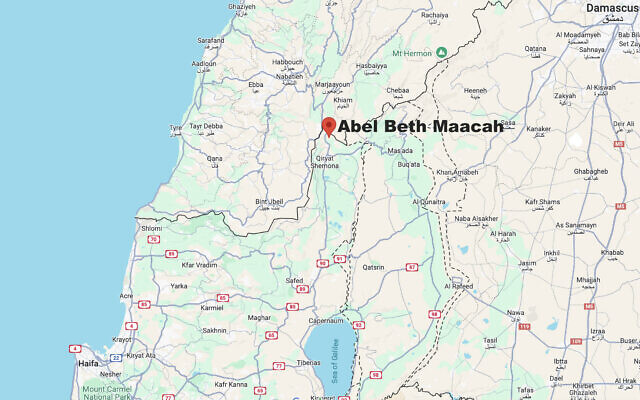
The implementation of the Tetrarchy brought with it major reforms, including fiscal policies and land management strategies aimed at strengthening the empire’s economy. The boundary stones, like the one found in Abel Beth Maacah, were part of these reforms, serving as physical markers that indicated boundaries of land that were crucial for taxation and military purposes. Understanding these reforms provides vital context for interpreting the tensions described in the Jerusalem Talmud.
The Carved Inscription: A Link Between Past and Present
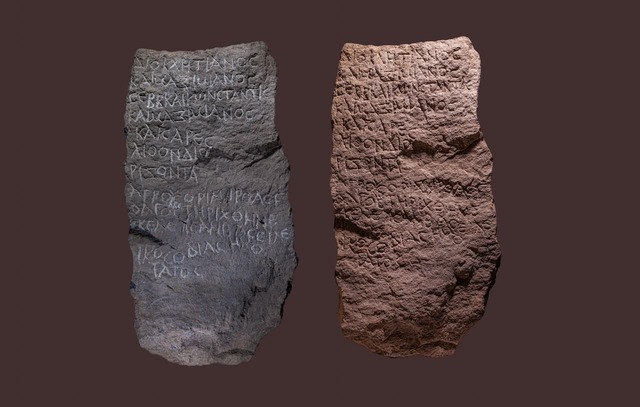
The inscription on the boundary stone is a valuable historical record, mentioning four key Roman emperors of the Tetrarchy: Diocletian, Maximian, Constantius, and Maximian (Caesares). It was not just an administrative marker but also a symbol of the empire’s attempt to exert control over local populations and their resources. The mention of these emperors and the stone’s placement suggests a clear effort to demarcate land, ensuring that tax collection and resource management could be systematically monitored.
The presence of this inscription, carved in Greek, marks an interesting departure from traditional Latin texts used in official Roman documents. This shift from Latin to Greek in the inscriptions during Diocletian’s reign is indicative of the changing cultural landscape of the Empire, particularly in the eastern provinces, where Greek was widely spoken.
The Archaeological Site: Abel Beth Maacah and Its Importance
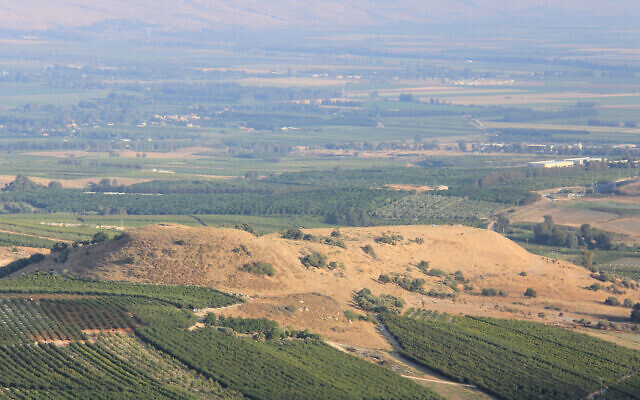
The boundary stone was discovered at the site of Abel Beth Maacah, an ancient settlement located in the northern Hula Valley. This site is significant not only for its archaeological value but also for its role in understanding the political and cultural history of the region. Abel Beth Maacah was an important city in biblical times, mentioned in the Old Testament, and its strategic location made it an ideal site for examining Roman control in the region.
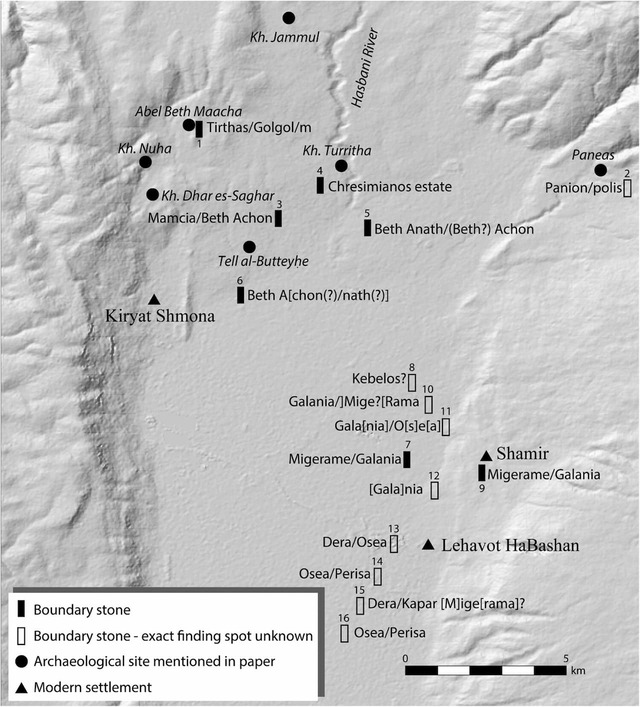
The site is also important for its connection to the wider archaeological landscape of Northern Israel, which includes multiple Roman-era settlements. The discovery of the boundary stone here indicates that the Romans were actively managing and overseeing territories in the region, offering us a more complete picture of Roman influence on local communities.
New Villages Revealed: Tirthas and Golgol
The inscription on the boundary stone mentions two villages, Tirthas and Golgol, which were previously unknown to historians and archaeologists. These villages, which seem to have been part of the administrative system during Diocletian’s reign, provide new insights into the settlement patterns of the time. The discovery of these villages offers a glimpse into the complex network of Roman governance in the region and shows the far-reaching impact of Roman fiscal reforms.
Interestingly, the names of these villages were not previously documented in any known sources. However, further investigation suggests that Tirthas might correspond to a location called Turritha, mentioned in a 19th-century report, and that Golgol could be identified with a nearby hill, Giv’at’ Egel, based on its historical names. This identification underscores the importance of archaeological finds in clarifying and expanding our understanding of ancient history.
Connection to the Jerusalem Talmud: Diocletian’s Tensions with the Local Population
One of the most fascinating aspects of this discovery is its potential connection to the Jerusalem Talmud, which describes Diocletian’s oppressive policies in the region. In the Talmud, there is an account of Diocletian’s oppressive actions in the city of Paneas, which was a significant center in the Golan Heights. This passage is consistent with the tension described in the inscription and the discovery of the boundary stones, which suggest that Diocletian’s fiscal policies may have led to local unrest.
The boundary stones could be seen as a response to the difficulties faced by local populations during Diocletian’s reign. As the empire sought to standardize its tax collection system, tensions likely arose between Roman officials and the local landowners, leading to the need for such markers to enforce the new policies. This connection between the Talmudic references and the archaeological record helps to fill in the gaps of this complex historical period.

The Role of Greek in Roman Inscriptions: A Shift in Language Use
The use of Greek on the boundary stone, instead of Latin, reflects the changing linguistic dynamics within the Roman Empire. Greek had long been the dominant language in the eastern provinces, and during the Tetrarchy, it became more common for official inscriptions to be written in Greek rather than Latin. This shift highlights the increasing importance of the eastern part of the empire, where Greek was spoken widely, and suggests a move towards accommodating local customs and languages within the Roman administrative system.
The Mystery of the Boundary Stones: Where Are They Found?
The discovery of these Tetrarchic boundary stones in Northern Israel is significant because, while the Tetrarchy affected the entire Roman Empire, these stones have been found exclusively in this region. This raises intriguing questions about the distribution of these markers. Archaeologists speculate that the stones may have been part of a localized system of taxation and land management specific to the region around Banias, where similar stones have been found.
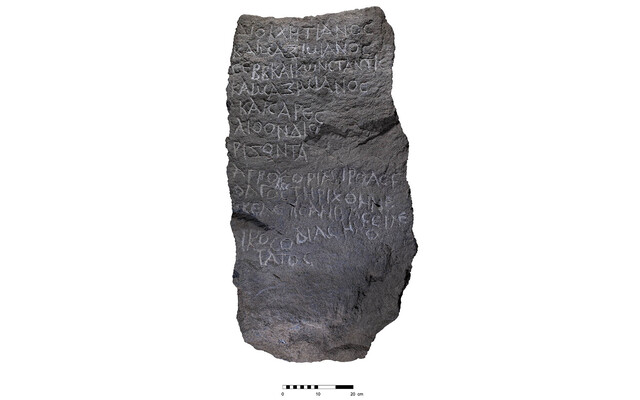
This concentration of boundary stones may indicate a unique administrative arrangement in this part of the Roman Empire, where local landowners and smaller villages were expected to manage their own resources and taxes independently. This theory aligns with the historical accounts of Diocletian’s fiscal challenges in the region.
The Official Figures: Baseileikos and Aelius Statutus
The inscription also mentions two Roman officials, Baseileikos and Aelius Statutus, who were responsible for setting up the boundary stone. While little is known about these individuals, their involvement in the administration of the region further illustrates the complexity of Roman governance. The presence of two officials’ names on the boundary stones suggests that they may have worked together or had overlapping responsibilities in managing the land and resources in the region.
Video
Don’t miss this full episode of Drain the Oceans as it delves into the rise of the Roman Empire, uncovering its hidden history beneath the waves.
Conclusion: New Insights into Ancient Roman Governance
The discovery of the Roman-era boundary stone in Abel Beth Maacah is a pivotal moment in the study of ancient Roman governance. Not only does it provide valuable insights into the fiscal policies of Emperor Diocletian and the Tetrarchy, but it also illuminates the tensions between the Roman administration and the local populations. With the identification of previously unknown villages and the connection to the Jerusalem Talmud, this discovery offers a new chapter in our understanding of the Roman Empire’s influence in the eastern provinces. Further research and excavations will undoubtedly continue to shed light on this fascinating period of history.
